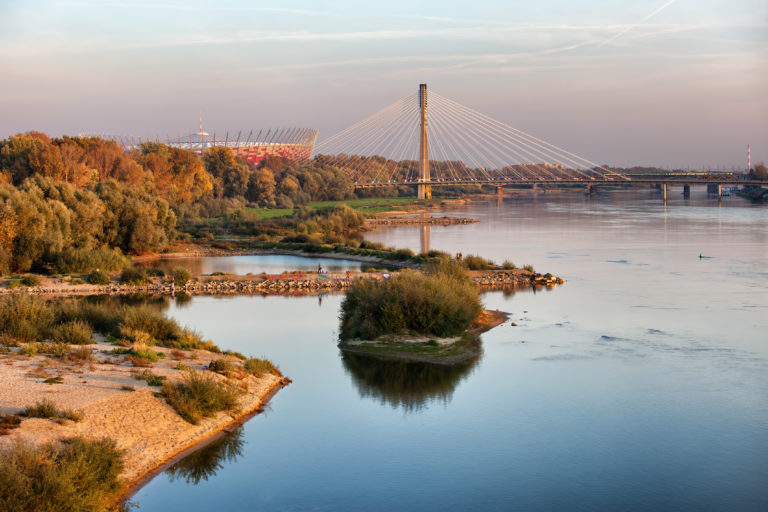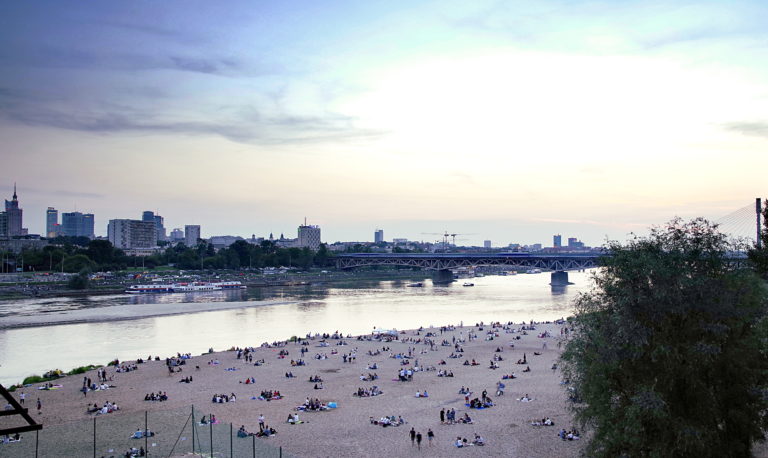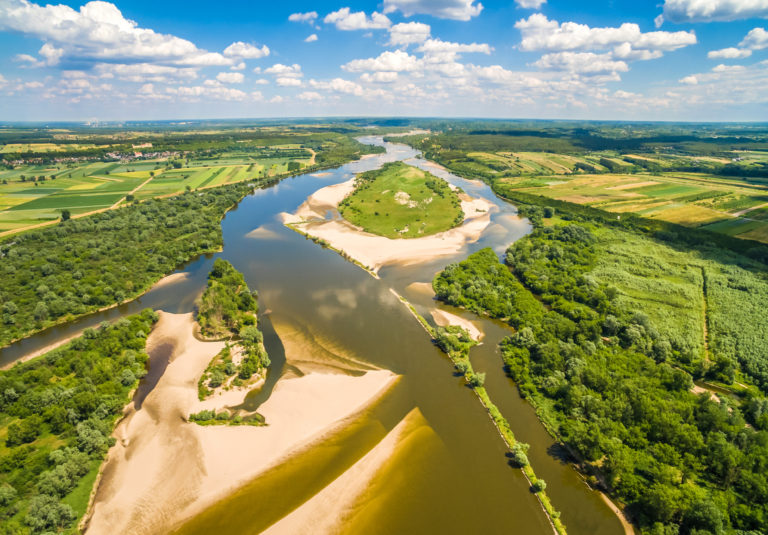Meandering through almost the entire territory of Poland, from its source near the Czech and Slovak borders to the Baltic Sea, this majestic river has witnessed the shaping of the Polish history. What once used to be an important transportation route is nowadays one of Europe’s last big, wild rivers. Welcome to the kingdom of Queen Vistula; take a closer look at the riches and treasures it holds.

She connects many of the most famous Polish tourist attractions, including the present and the former capital cities. So no matter if you visit Warsaw or Kraków, Gdańsk or Toruń, Sandomierz or Kazimierz Dolny, she’ll be watching you. But if you’re eager to discover Poland by taking a river cruise, hold your horses. Queen Vistula won’t give her consent.
You see, other big European rivers may envy her natural, unregulated beauty, with her branched riverbed and numerous oxbow lakes, sand point bars and islands. But she is also a very temperamental sovereign, with high yearly water level fluctuations (in Warsaw ranging from 7,5 meters to as low as 50 centimeters), which makes it for the most part unnavigable, except for small river vessels. However, she looks favorably upon the growing popularity of kayaking along the wild stretches, combined with sightseeing of the old towns by her banks.
The Vistula plays an enormous ecological role. In Warsaw alone, it attracts over two hundred bird species,as well as beavers, otters and moose. Even in the capital city, there are stretches where the river flow is not channelized and the Vistula can shape her shores the way she pleases. There are six beaches in Warsaw, including two in the city center, with a breathtaking view over downtown Warsaw or the Old Town. And there are also two Natura 2000 protected areas.

But it turns out that the picturesque landscape and the wealth of wildlife are not the Queen’s only treasures. Following an urban legend, in 2010 a group of people started searching for 17th-century treasures from the times of the so-called Swedish Deluge that allegedly had been lying underwater somewhere in Warsaw.
The Deluge refers to the Swedish invasion in the Polish-Lithuanian Commonwealth that took place between 1655 and 1660, when our country was systematically looted and plundered. It is believed that the destruction was even more extensive than what Poland suffered during World War II, and many Polish treasures, art pieces etc. were transported to Sweden.
So in 2010, while the water level was high, modern electronic devices were used to make a digital map of the Vistula’s riverbed. In 2011 divers joined in (which didn’t really help much, taking into consideration that the water visibility in the Vistula is only about 10 centimeters). Eventually, in late summer, when the water level dropped to waist level, some 98 pieces of Baroque architecture were found. The following year, heavy elements were lifted by helicopters. Most of the pieces were from Pałac Kazimierzowski, which was one of the many palaces that were plundered by the Swedes, and they were supposed to be transported to Sweden.

In 2015 the Vistula decided to share even more of her treasures and invited people to reach them on foot. The water level hit a new record (only 42 centimeters low), unveiling amazing finds, such as painstakingly sculpted cannons and lots of cannonballs. Moreover, it also revealed elements of an old bridge from the 18th century, a shipwreck that had sunk during the Warsaw Uprising, a train carriage used by the Germans, and pieces of Jewish matzevot.
When you come to Poland, take your time to sit by the river bank, be it in Kraków or Warsaw, Toruń or Gdańsk, and listen to the soft whisper of the Vistula. Let her tell you her version of Poland’s history.
 LET'S DESIGN YOUR TOUR!
LET'S DESIGN YOUR TOUR!